Different from the flat fields where storks glide across the alluvial plains of the delta, the Mu Cang Chai rice terraces paint a powerful harmony between the majesty of the mountains and the beauty of human labor. Sculpted by generations of Hmong hands, they embody the art of cultivating vertically, in the silence of the heights.
Nestled in the highlands of northwestern Vietnam, Mu Cang Chai remains a confidential, wild, and precious land. At over 3,280 feet in altitude, the Mu Cang Chai rice terraces form a landscape masterpiece where agriculture transforms into art. Light, seasons, and the lines of cultivation intertwine to create an ever-changing spectacle. Classified as a national natural heritage site, the region attracts travelers in search of raw nature, human connection, and serenity. This is not a static backdrop but a living world, shaped daily by human hands and the curves of the mountains.
1. Why are the Mu Cang Chai rice terraces unique?
Nestled in the heart of the Northern mountains, the terraced rice paddies of Mu Cang Chai represent one of Vietnam's most iconic landscapes. From north to south, the S-shaped silk ribbon that is Vietnam is shaped by an infinite variety of rice paddy landscapes. In the high valleys of the north, in Sapa, Y Ty, Bac Son, or Hoang Su Phi, the rice fields create spectacular natural frescoes, suspended between sky and earth. Near Hoi An (central Vietnam), the rice paddies stretch as far as the eye can see, calm and regular, where the light silhouettes of birds glide silently, like wings brushing the water. Further south, in the Mekong Delta, the rice fields are submerged in water, nourished by a network of canals and currents. But then, among so many wonders, what makes Mu Cang Chai so special, so unforgettable?
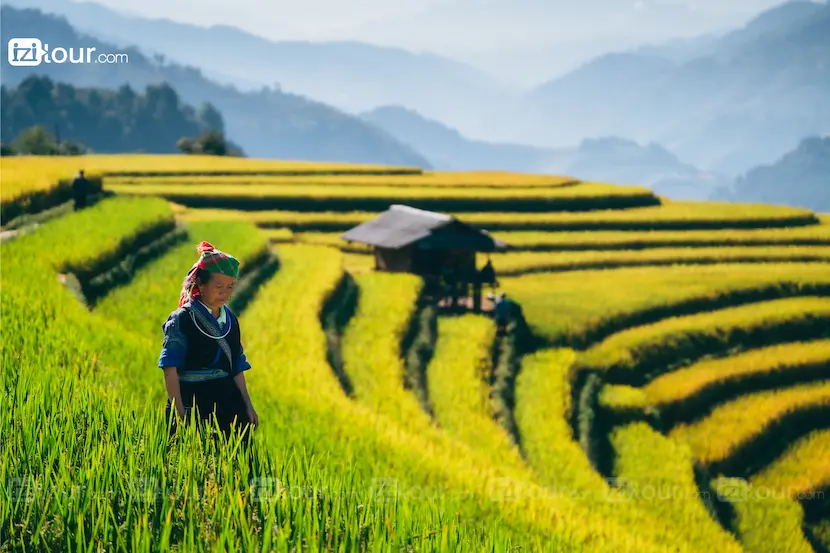
First and foremost, the Mu Cang Chai rice terraces are a breathtaking sight. Seen from above, the mountain transforms into waves of greenery or golden light, following the rhythm of the seasons. Each curve follows the natural slope of the terrain, creating soft, undulating, almost unreal lines that sculpt the mountain like a life-size work of art.
But what makes Mu Cang Chai truly unique is not just this striking beauty. Here, nature is not content to simply be beautiful: it engages in a dialogue with humankind. Here, the Hmong people have not only cultivated the mountain: they have tamed it, inch by inch, carving each curve of earth as one chisels a work of art. It was not the land that offered itself to them, but they who patiently shaped it – by hand, by sweat, and by the long breath of generations. In Mu Cang Chai, the rice terraces nourish the body, but also the identity. They tell the story of the tenacity, the silent harmony, and the creativity of a people in balance with their world.
2. Where and when to visit the rice terraces in Mu Cang Chai?
Exploring the rice fields of Mu Cang Chai means immersing yourself in a world of hand-sculpted mountains, where every turn in the road reveals a new, dizzying panorama. Whether you are a photographer, a hiker, a passionate follower of local culture, or simply a curious traveler, the region is full of experiences to be lived intensely.
2.1. The most beautiful spots to admire the Mu Cang Chai rice terraces
Mam Xoi Hill - The iconic heart of Mu Cang Chai
Located in La Pan Tan, Mam Xoi Hill is undoubtedly the most famous image of Mu Cang Chai. Seen from the sky, it forms a perfect spiral, comparable to a tray of sticky rice (mam xoi) prepared for a ceremony. During the golden season (September - October), the place offers an unforgettable visual spectacle, with amber tones and morning mists. Accessible after a short walk, it is a must-see for any traveler or photographer.
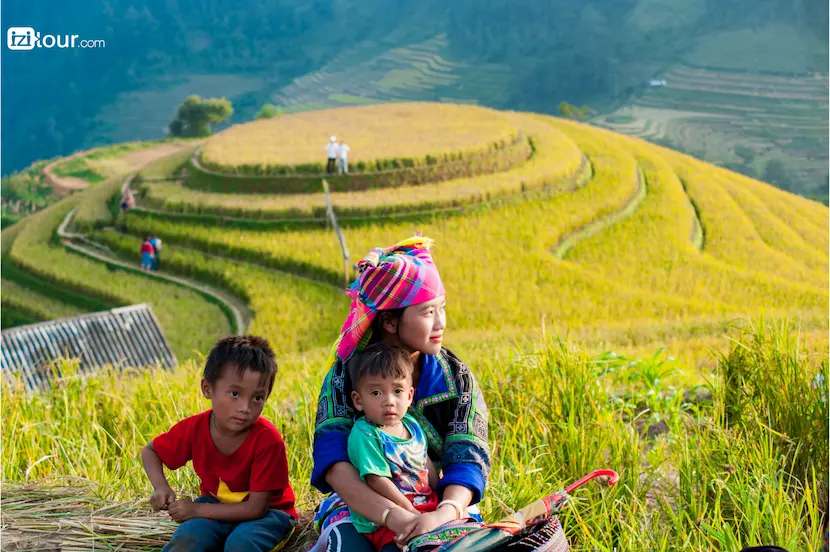
Horseshoe Valley (Mong Ngua, Ta Chu) - Rice terraces with perfect curves
In Sang Nhu, the Ta Chu site is known by the evocative name of Horseshoe Valley (Mong Ngua), due to the almost perfect shape of its terraced rice paddies. From the heights, the cultivation lines form a harmonious, soft, and continuous curve, evoking the silhouette of a horseshoe placed between the hills. Less crowded than iconic sites like Mam Xoi, this place seduces with its unspoiled beauty, its calm, and its natural photogenicity. At sunrise or sunset, the grazing light accentuates the shape, revealing a delicate, almost graphic landscape, highly appreciated by photographers.

Che Cu Nha - Rustic beauty and serenity
Just a few kilometers from the town center, Che Cu Nha stands out with its gently sloping rice fields, its open valleys, and its calm atmosphere. It is an ideal place for leisurely walks, encounters with locals, and more intimate and natural shots.
De Xu Phinh - Sunrise panorama
Nestled in the heart of a more remote valley, De Xu Phinh offers unobstructed landscapes perfect for sunrise. The rice paddies here stretch out widely, bathed in the golden morning light, creating a soothing and contemplative atmosphere.
Kim Noi Village - Immersion in the heart of Hmong villages
Located near the center of Mu Cang Chai, Kim Noi Village offers a panoramic view of harmoniously tiered rice terraces, amidst traditional wooden stilt houses. Here, the atmosphere is calm, intimate, and deeply authentic. It is one of the best places to observe the daily life of the locals, walk along the paths between the rice fields, or simply enjoy a sunset in the heart of nature. Kim Noi is also an excellent starting point for travelers wishing to stay with locals, taste local dishes, and discover traditional crafts.
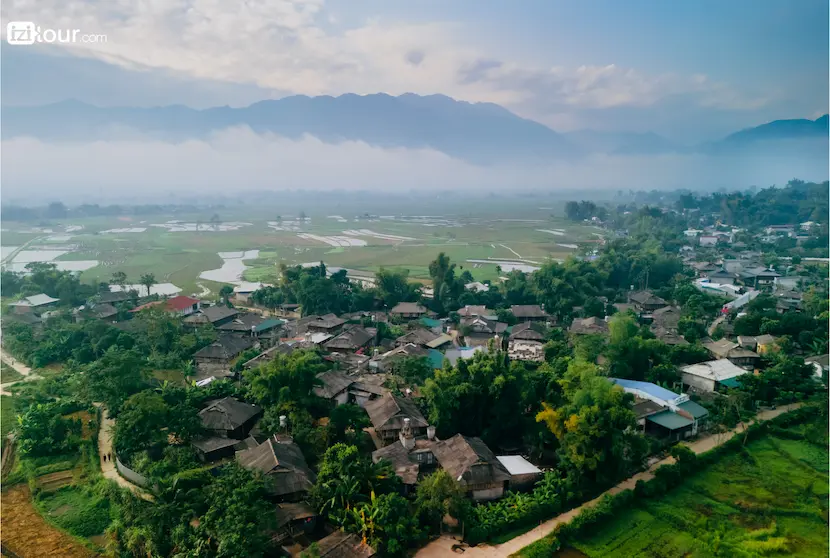
Khau Pha Pass - Aerial views and thrilling sensations
Perched at over 3,900 feet in altitude, Khau Pha Pass offers a breathtaking panoramic view of the Tu Le valley and its rice terraces. It is also the site of the famous paragliding festival, where adventurers can fly over the golden fields for a breathtaking experience.
2.2. Best Time to Visit the Rice Terraces in Mu Cang Chai
Located in a high mountain region, Mu Cang Chai experiences only one rice cultivation season per year. A unique agricultural calendar that gives the terraced rice paddies an even more exceptional charm. Here, each stage of the rice cycle transforms the landscape into an ephemeral work of art, offering two particularly spectacular periods to experience and admire.
May - June: The watering season
At the beginning of summer, the first rains and spring waters are diverted to irrigate the rice paddies. This is the time when the Hmong people dam the streams, prepare the dikes, and turn the soil for planting. The result is an almost unreal landscape: the terraces become giant mirrors, reflecting the blue of the sky, the white of the clouds, and the brown hues of the earth. During the day, the rice fields shimmer as if they were carved from liquid gold under the sun. At night, in the moonlight, the stagnant water takes on a silver tint, creating mysterious plays of shadows and light, like a living watercolor on the mountainsides.
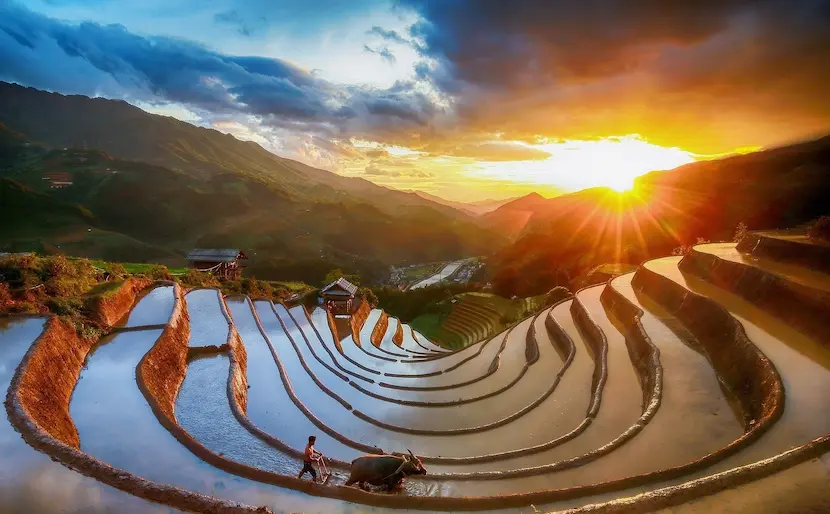
September - October: The golden season
In autumn, Mu Cang Chai reaches its peak. The rice paddies are adorned with a thousand shades of yellow, from flamboyant gold to pale green, depending on the stage of rice maturation. The fields are arranged in perfect layers, surrounding the hills like golden staircases rising to the sky. Each terrace, sown at a different time, reveals a distinct color, creating a striking natural patchwork. The whole forms a monumental autumn tableau that moves all who have the chance to contemplate it. This is also the time when the village comes alive: visitors from all over the country flock to witness the harvest and the paragliding festival from Khau Pha Pass.

3. Must-do activities in Mu Cang Chai
Hiking among the rice paddies
Mu Cang Chai is a paradise for lovers of gentle and contemplative walking. Several trails wind between the rice terraces, the wooded hills, and the small perched hamlets. While walking, take the time to observe the details: a grandmother drying corn, children playing in a stream, a freshly transplanted rice paddy. Walking here is not a performance but a way to resonate with the slow rhythm of nature.
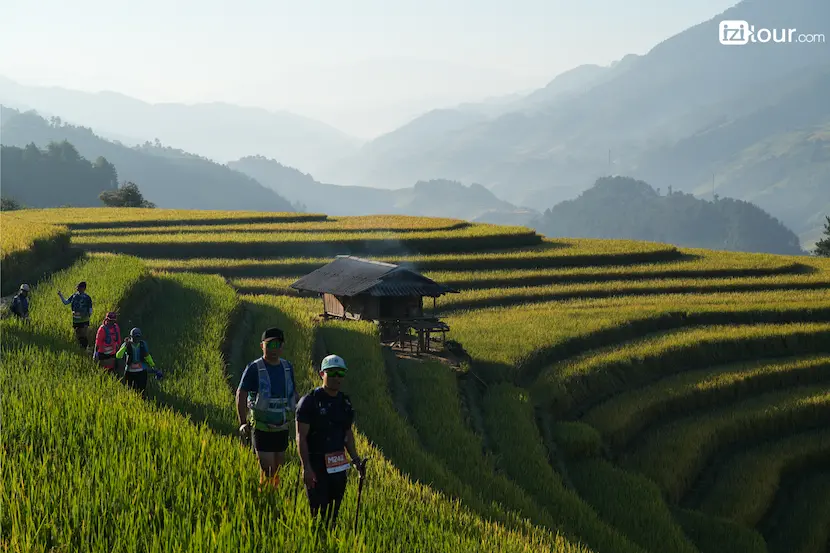
Immersion in Hmong villages
Staying with locals in Hmong villages is one of the most memorable experiences to have in Mu Cang Chai. In simple but warm wooden houses, you will discover mountain hospitality, share homemade meals based on local products, and observe everyday gestures: weaving, cooking over a wood fire, family rituals. This immersion will allow you to understand the richness of a discreet but deeply rooted culture in the landscape.
Landscape photography
The light in Mu Cang Chai is a spectacle in itself. From the first light of dawn, the mists slowly rise over the terraced rice paddies, revealing perfect curves and soft contrasts. At the end of the day, the sunset gilds the reliefs and gives the valley warm, almost unreal tones. During the water season, the reflections in the terraces create fascinating visual effects, while the golden season offers a festival of colors that photographers should not miss.
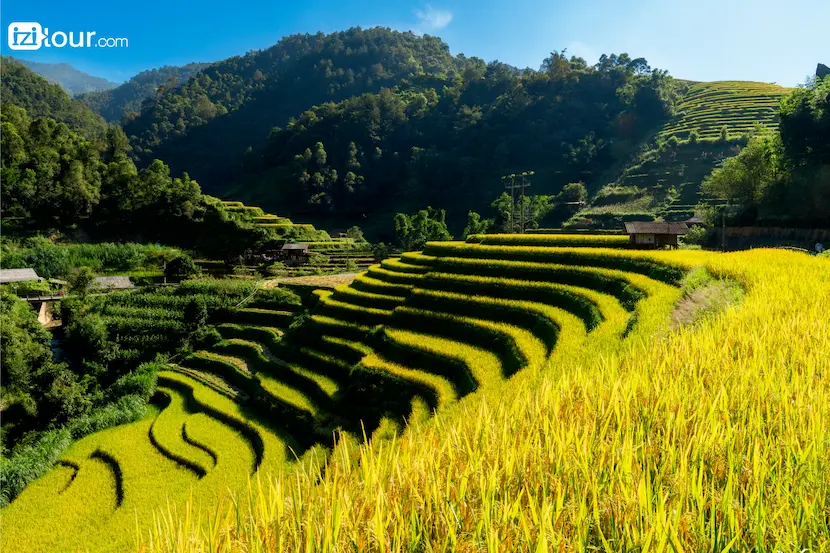
Paragliding at Khau Pha Pass
For those seeking an unforgettable experience, paragliding at Khau Pha Pass is a suspended moment between sky and earth. Every year in September, the "Flying Over the Golden Rice Fields" festival attracts enthusiasts who come to fly over the golden rice paddies in a festive atmosphere. The panorama seen from the sky is breathtaking: cascading terraces, villages nestled in the valleys, and the horizon stretching as far as the eye can see.
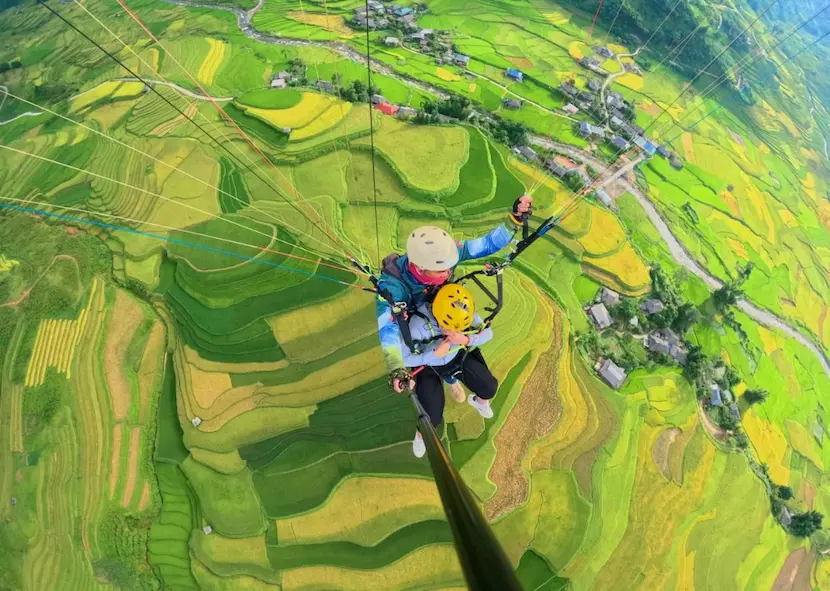
Agricultural activities (Depending on the season)
Depending on the season, you can also participate in agricultural work alongside the locals. In May-June, it's soil preparation and rice transplanting; in September-October, it's the harvest. These simple but essential gestures will make you aware of the close link between humans and the mountains. You will not soon forget the emotion of holding a handful of golden rice under a late summer sun.
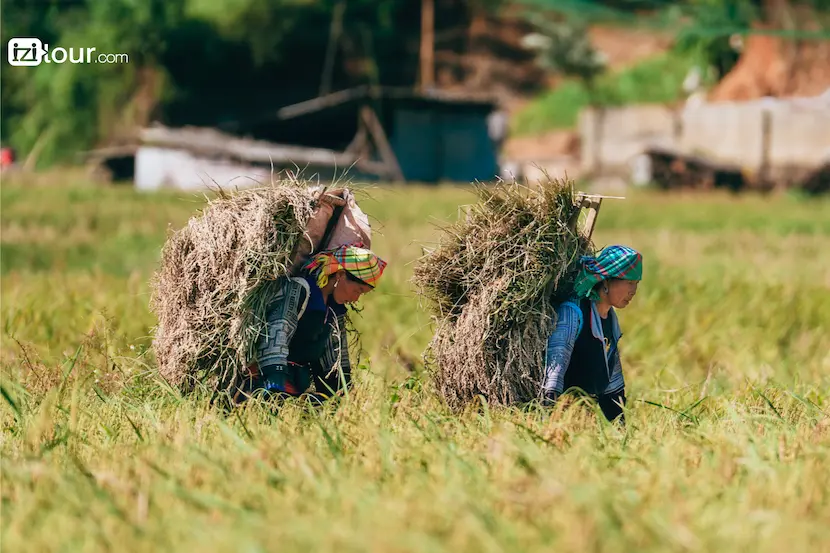
4. Recommended Mu Cang Chai itineraries
3-Day itinerary
Day 1: Hanoi – Nghia Lo / Tu Le: Early departure, stop at Thanh Son or Thu Cuc, arrival in Nghia Lo or Tu Le in the afternoon.
Day 2: Tu Le – Mu Cang Chai: Crossing Khau Pha Pass, visit to Mam Xoi and surrounding villages.
Day 3: Mu Cang Chai – Hanoi: Early rise, return to Hanoi with breaks en route, late afternoon arrival.
4-Day itinerary
Day 1: Hanoi – Tu Le: Early departure, travel to Tu Le, walk in the valley or hot springs.
Day 2: Tu Le – Mu Cang Chai: Crossing Khau Pha Pass, visit to Mam Xoi, discovery of La Pan Tan and Kim Noi villages.
Day 3: Mu Cang Chai – Remote villages: Exploration of Ta Chu, visit to De Xu Phinh, immersion with the Hmong people.
Day 4: Mu Cang Chai – Hanoi: Return to Hanoi in the morning, late afternoon arrival.
7-Day itinerary
Day 1: Hanoi – Nghia Lo / Tu Le: Early departure, discovery of hilly landscapes and Muong villages.
Day 2: Tu Le – Mu Cang Chai: Crossing Khau Pha Pass, exploration of the famous rice terraces.
Day 3: Mu Cang Chai – Dien Bien Phu: Scenic drive to the historic city of Dien Bien.
Day 4: Dien Bien Phu – Lai Chau: Visit to the remnants of the battle and meeting with local ethnic groups.
Day 5: Lai Chau – Sapa: Crossing O Quy Ho Pass, arrival in Sapa and walk in the valleys.
Day 6: Sapa – Bac Ha: Discovery of Hmong villages and the traditional market.
Day 7: Bac Ha – Hanoi: Leisurely return to Hanoi through the Northern mountains.
9-Day itinerary
Day 1: Hanoi – Nghia Lo: Departure from Hanoi, immersion in the rural life of Muong people.
Day 2: Nghia Lo – Mu Cang Chai: Spectacular landscapes and rice terraces as far as the eye can see.
Day 3: Mu Cang Chai – Sapa: Mountainous road to Sapa, photo stops along the way.
Day 4: Sapa – Bac Ha: Gentle hike between rice paddies and ethnic villages.
Day 5: Bac Ha – Ha Giang: Colorful local market and Hmong culture.
Day 6: Ha Giang – Ba Be: Entry into the karst region of the Northeast.
Day 7: Ba Be – Hanoi: Giant freshwater lake and mountain landscapes, isolated villages.
Day 8: Hanoi – Lan Ha Bay: Depart Hanoi for Lan Ha Bay, cruise, and discover the bay's breathtaking scenery.
Day 9: Lan Ha Bay – Hanoi: Cruise in the bay, return to Hanoi in the afternoon.
Mu Cang Chai, with its spectacular rice terraces, is an invitation to contemplation and escape. If you dream of discovering this still-preserved corner of paradise, do not hesitate to contact us at [email protected] or leave a comment below. We will be delighted to organize an authentic and unforgettable trip for you.
Explore Northern Vietnam Tours
See more:
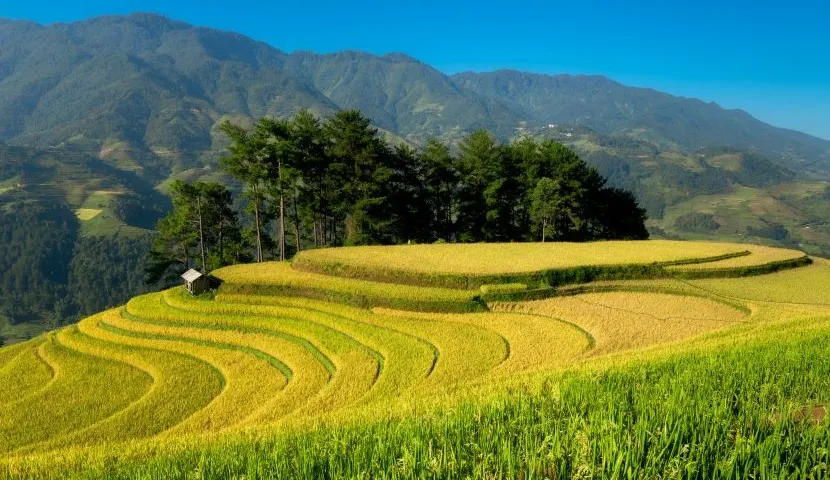







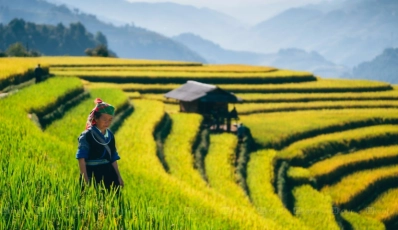
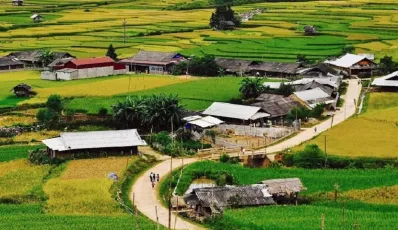
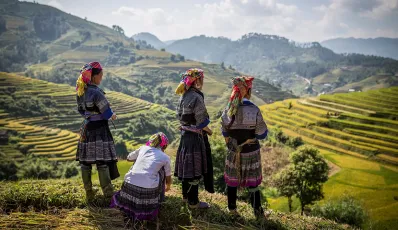

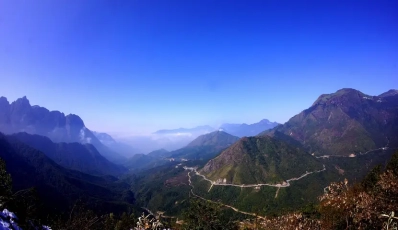
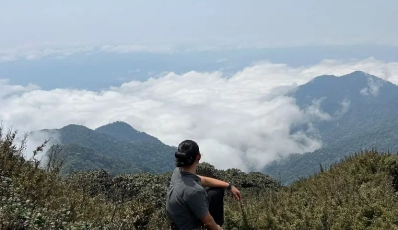

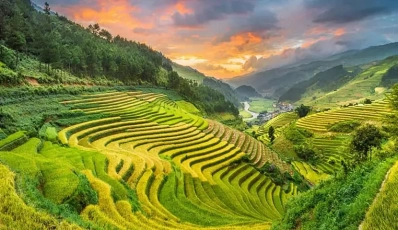

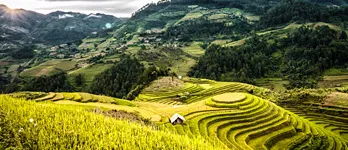
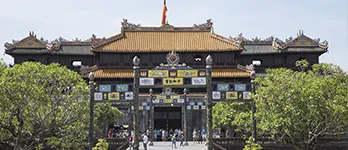
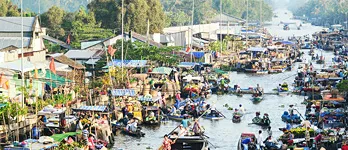

 TRAVELERS' CHOICE 2025
TRAVELERS' CHOICE 2025 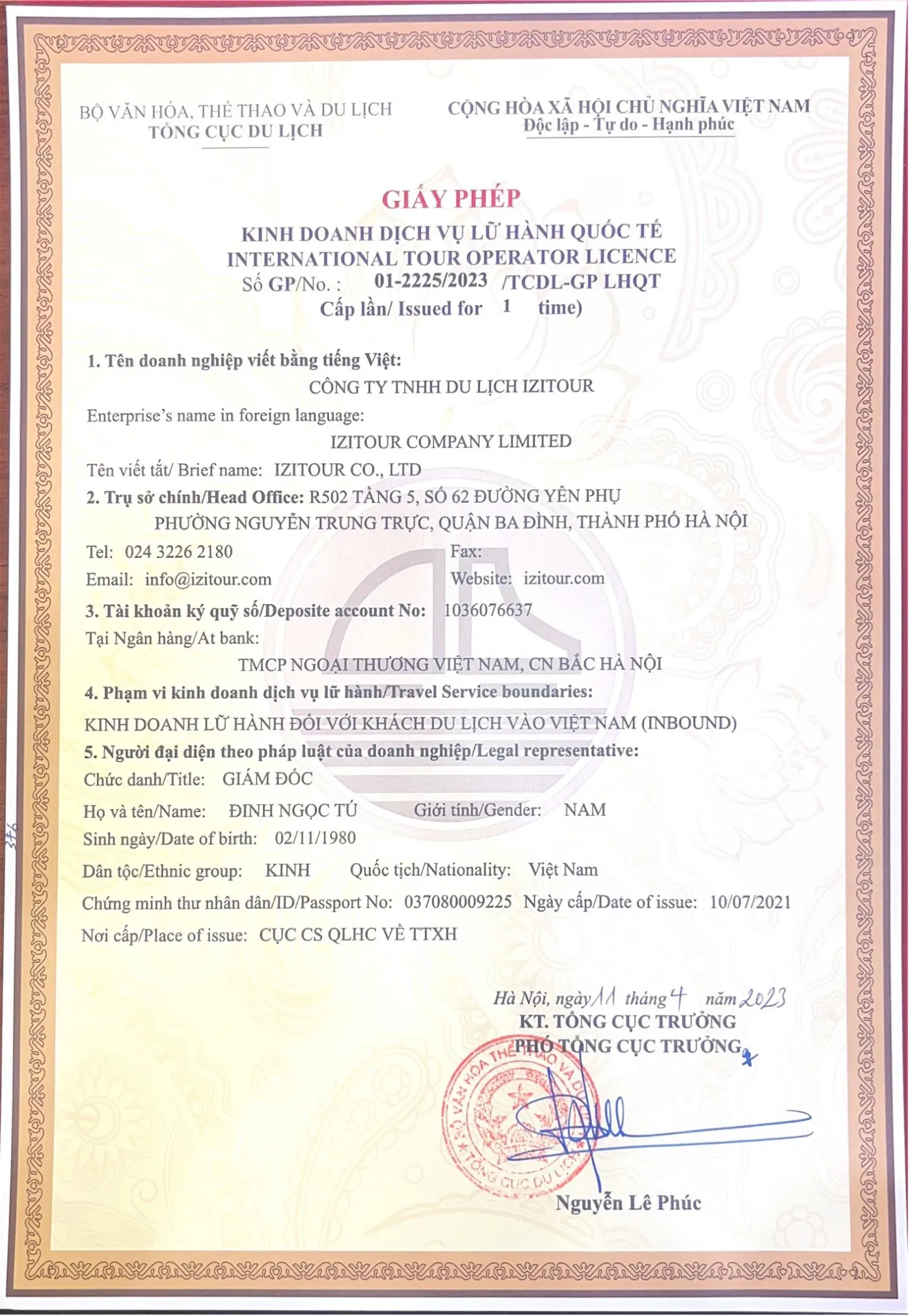



02 Comments
Italy
Vietnam
Write Reply